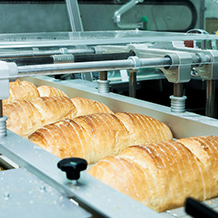
Smart story
Is your digital backbone strong enough?
A conversation about MES with Siemens' Raj Ragupathi
Raj Ragupathi's love for smart manufacturing started before it was even a thing. As a high school intern with his family's automotive manufacturing business in India, he was fascinated with this intersection where ideas and design become reality.
Today as the digital manufacturing transformation leader at Siemens—the company is also a Founding Sponsor of The Smart Factory @ Wichita—he's living his passion to bring new ideas to life. But not all ideas are created equally. “You can have great ideas, but you have to make them quick, at the highest quality, at the lowest cost, and better than your competitor,” Ragupathi says. The key to getting there? Digital transformation.
Digital transformation takes many forms, especially here at The Smart Factory @ Wichita. It can start with design transfer—where a product design gets transferred into the manufacturing environment—or it can start at the manufacturing execution system (MES) level. Every project is value-driven and begins by understanding our customer. “We get to talk to some of the best-in-class manufacturing and engineering practitioners on how they are realizing their vision today and what their aspirations are for the future.” Then, Ragupathi says, it's pairing that vision with the right software solutions to help them get there.
Where to begin?
Sometimes seeing is believing. Ragupathi says the biggest differentiator of The Smart Factory @ Wichita is being able to show clients how a transformation would actually work. “It's not just a theory—they can see it for real, and that's a key step.”
Beyond seeing their potential, Ragupathi helps customers define their problem. “If you dig deeper, you make them realize we're not just solving a small problem, but that there's an underlying bigger cause.” It starts with vision building and value mapping, then advances on to prioritizing and deploying the solution.
“What people sometimes forget is going back to the basics.
If you go back to the basics—making it quicker, cheaper, better than others—you need a good digital
backbone to absorb the changes as they're thrown to manufacturers.”
— Raj Ragupathi
Digital Manufacturing Transformation Leader at Siemens
MES in action
Siemens uses MES as part of The Smart Factory solution to make our customers' manufacturing processes quicker, cheaper, and better than their competitors. Here's how it works:
It begins with traceability. Everything that happens during the production process is traceable. MES takes that information in without someone having to write it down, keeping a digital record.
This includes genealogy. What materials make the product? Did the required materials go into the product or were some of them expired? MES takes care of material-related complexities.
And it all hinges on quality. MES ensures you're building the product to its specifications for consistency and value. By providing visibility into the manufacturing process, MES helps manufacturers improve efficiencies and ensure quality. And beyond that, it's a huge compliance driver in regulated industries, according to Ragupathi. For years, regulators have had to rely on paper records, which include human errors and are often missing pages. Small mistakes like this can turn into big problems (and fines) during the regulation process.
Scaling beyond semiconductors
MES got its start thanks to the semiconductor industry. “There's not a single medium-large semiconductor fab anywhere in the world that doesn't have some MES solution. It's part of their DNA,” says Ragupathi. Beyond chips, he sees real opportunity across industries where MES can make a difference. Some industries are already using them, like high-tech electronics. But others are lagging, like the medical industry. “The products they make are so innovative, so lifesaving. But their manufacturing systems are still stuck in the 19th century with paper and manual processes.”
Embarking on a digital transformation can seem like a far-off dream rather than an actionable plan. But Ragupathi always goes back to what first enamored him with smart manufacturing all those years ago. “People think smart manufacturing is abstract—a theory. But it's actually very practical. It's having the digital backbone to make ends meet for manufacturers.” Where ideas and designs—not far-off dreams—become reality.
“In a world with constant innovation, successful ideas are
scalable ideas. Think cell phones, cars, semiconductors…they are constantly iterating, yet consistently
deliver.”
— Raj Ragupathi
Digital Manufacturing Transformation Leader at Siemens

